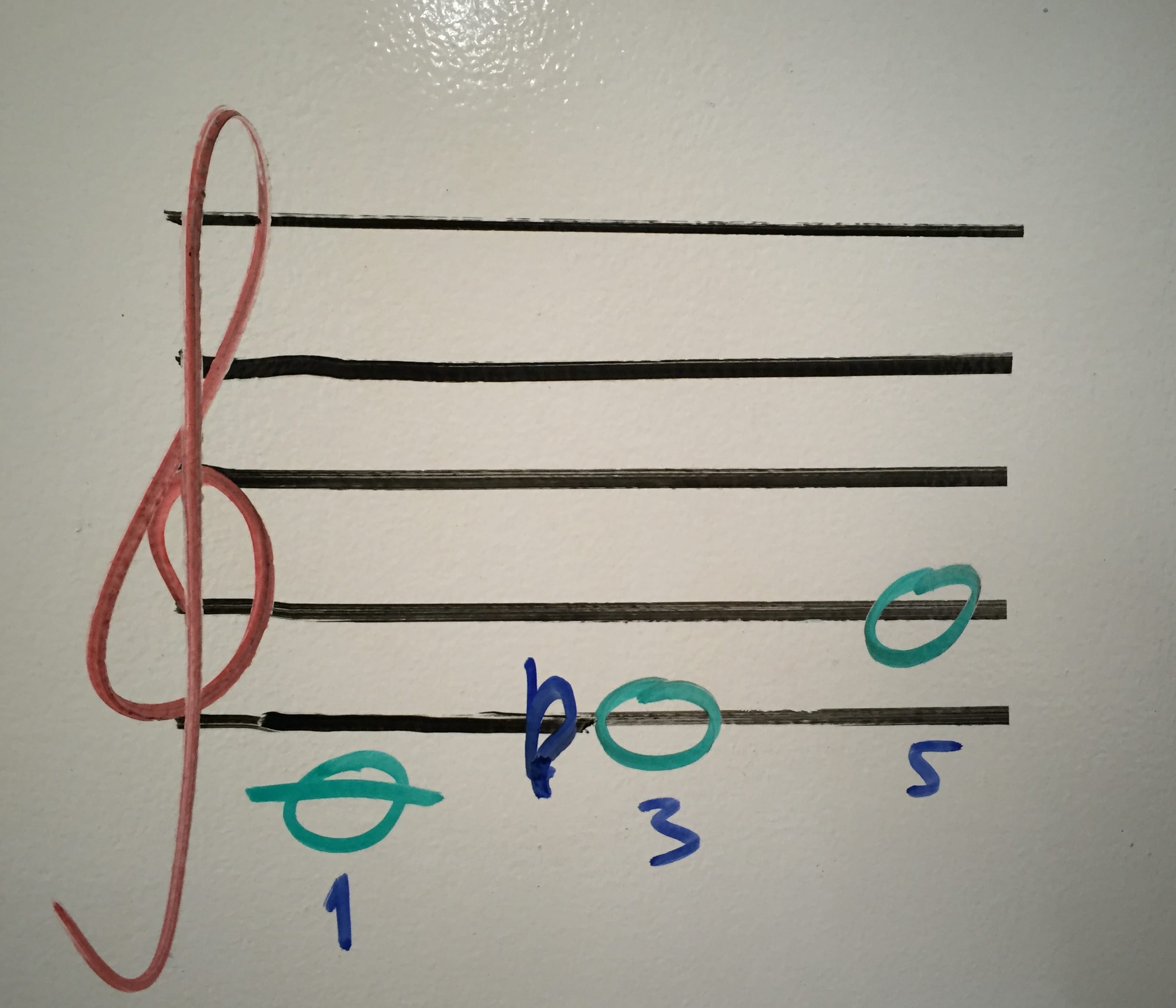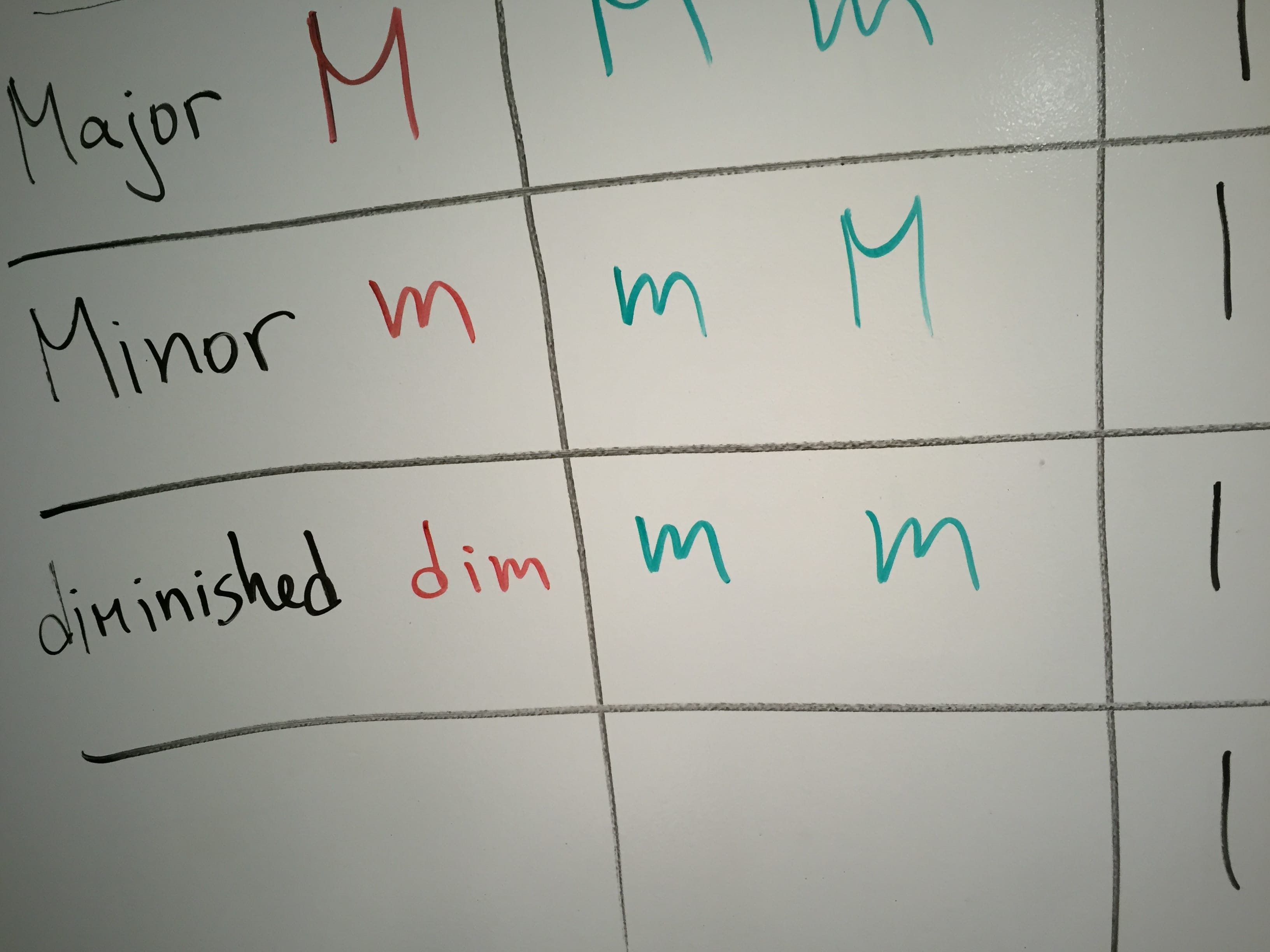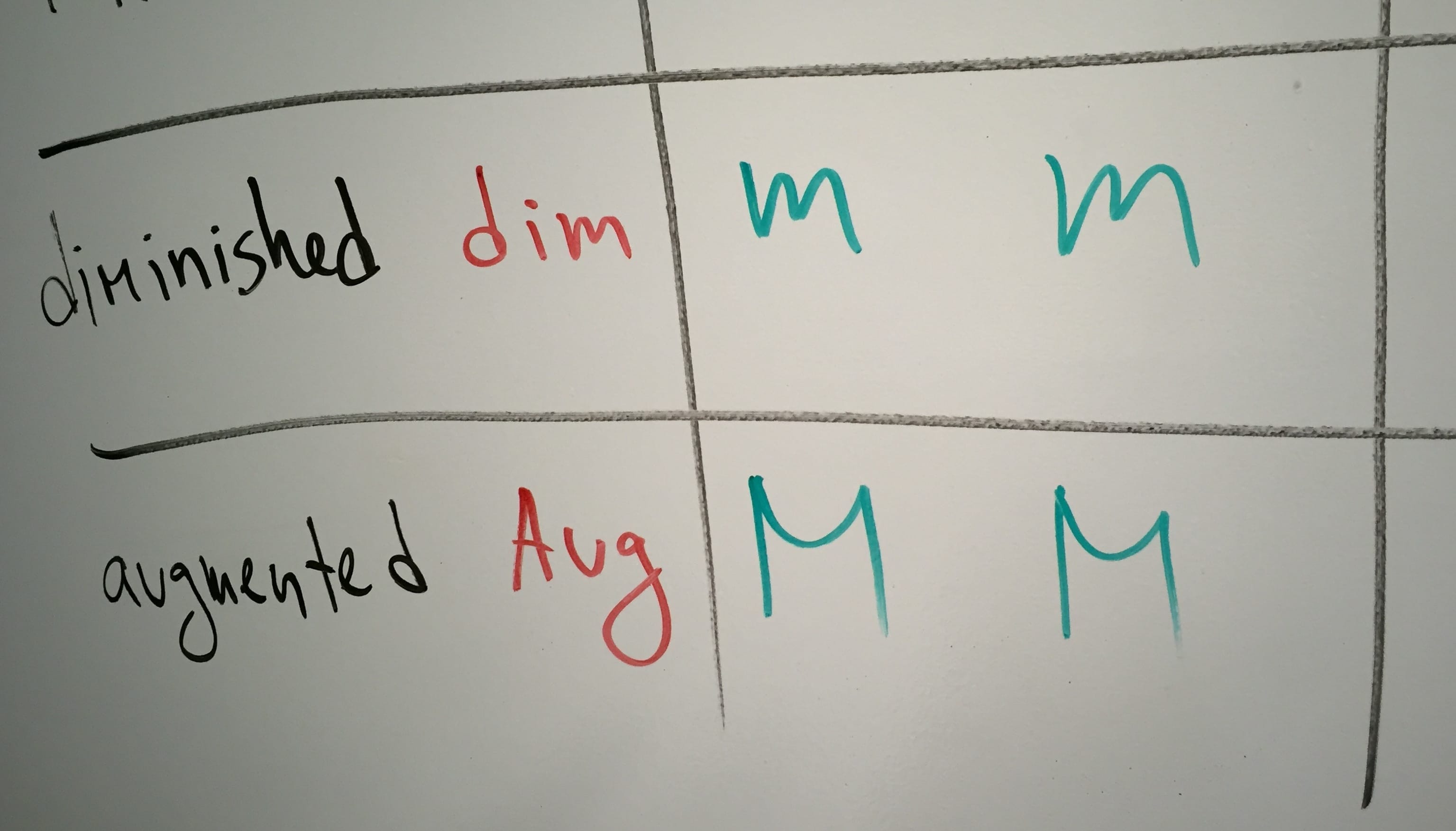Let’s talk triads.
As the name suggests it’s a combination of three notes. The simplest chords are also triads, e.g. C major chord is the triad C, E, G.
Anyway, there are four types of triads – major, minor, augmented and diminished.
In this post you’ll learn how to populate a table of triads that is a helpful tool when starting with triads. This is the end result:

Now let’s see how to make sense of this table, how to populate it and how to use it going forward.
Intermission
This post is part of series where I spill the beans of what I learned in Music Theory 1 class from an awesome professor. He gave us these little tools and tables that suddenly made so much sense, more than anything I taught myself from various online and offline resources.
Other posts in the series:
Tools to practice your newly acquired knowledge:
- Intervals
- Triads (topic of this post)
- Key signatures (apply the circle of circle of fifths)
- Note identification (you know, the very basics)
TL;DR
You already know intervals. Triads can be thought of as an extension of the intervals. Intervals deal with two notes (1 and 2). Triads deal with three (1, 2 and 3). The relationship between notes 2 and 3 is also an interval.
If you only think of the intervals between consecutive notes, then all you need to remember is where does major third go and where does minor third go. Simple. Only 3rds. Only Major and minor 3rds. Nothing else. Don’t you worry about 5ths. Forget scale degrees.
Depending on the intervals between notes 1, 2, and 3 you have:
- Major triad. Note 1 to note 2 is a major 3rd, note 2 to note 3 is a minor third.
- Minor triad. The reverse. 1 to 2 is minor third, 2 to 3 is major third
- Diminished. Both intervals are minor thirds.
- Augmented. Both intervals are major thirds.
Back to the scheduled program. Triads.
Here’s a scale. The simplest. C major. All white keys on the piano.

Number these notes. Call them “degrees” in the scale:

You only care about up to the 5th when it comes to triads:

And not even all five, just 1, 3, and 5:

Ignore all but these three (triad!) notes in the scale.

Look at the intervals between these. C to E is a major third. E to G is a minor third. (If this makes no sense, go back to the post about intervals)

Now let’s start populating out little table of triads.
The first entry means: a major triad (also commonly spelled “M”) consist of three notes where the interval between the first and the second is a major third and the interval between the second and the third is a minor third.
These three notes also happen to be the natural 1, 3 and 5 degrees of the major scale.

Coming up next – the minor triad. What could it be?

Oh by the way let’s populate the last column with 1, 3, 5. All triads use these three (triads!) just some of them move a little.

Now back to the minor triad.
The minor triad is created by lowering the third.

In other words, on our C, E, G example, the third E becomes E♭.

Look at the new intervals. 1 to 2 is a minor third, 2 to 3 is a major third.

We can put this new information into the table and move on with our lives.

Moving on. With our lives. What’s next? Diminished.

The diminished triad consists of two minor thirds. Is all. Don’t ask me why. That’s just the way it is. Diminished (small) consist of two of the smaller kind of 3rds (where minor is smaller and major is bigger).

In terms of scale degrees, you lower the third and lower the fifth as well.

Here comes the staff. Two minor 3rd intervals:

Last ‘un: augmented triad. Also commonly written as Aug. Capital Aug. Lowercase aug. Capital M. Lowercase m.

So, augmented. What could it be? Sounds big. Which was the bigger 3rd – major or minor? Major, that’s right.

The augmented triad has a major third between notes 1 and 2. And another major third between 2 and 3.

When it comes to scale degrees, you leave 3 be (it’s already major) and raise the fifth so the second interval becomes major.

That’s it, now you have populated the whole table of triads. Ain’t that cool. Look at it, just look. At. It.

Examples
Let’s see a couple of other examples. Cause, you know, not all triads start from C.
Let’s start with G and draw two more circles (pancakes) above it. That would be B and D.
G to B is major 3rd. (M!) B to D is a minor third. So M-m. A major triad. M. Cool. Then lowering the 3rd (by way of a ♭) gives you a minor triad (cause 1 to 2 is minor and 2 to 3 is major). Then lowering both the 3rd and the 5th gives you a diminished triad.
Finally restoring the 3rd where it was (major) and augmenting the fifth gives you two majors. And M and a M means two majors, in other words an augmented tried. Enjoy!

One more example. Draw an A and two more pancakes (notes) above it. What do you have? A, C, E. ACE. A to C is a minor third. C to E is a major third. So m then M is a minor triad.
Upping the third (with a ♯) gives you A to C♯ (a major third) then C♯ to E – a minor third. Looking back at the table you can see that M followed by an m is a major third.
Augmenting the 3rd note in the triad (which happens to be the 5th in the scale) gives you an M followed by an M. Two Ms is an augmented triad.
Bringing down the C where it naturally was, gives you a minor third (A to C), and lowering the E to E♭ means C to E♭ is another minor third. Two minors spell a diminished third triad. Enjoy!
